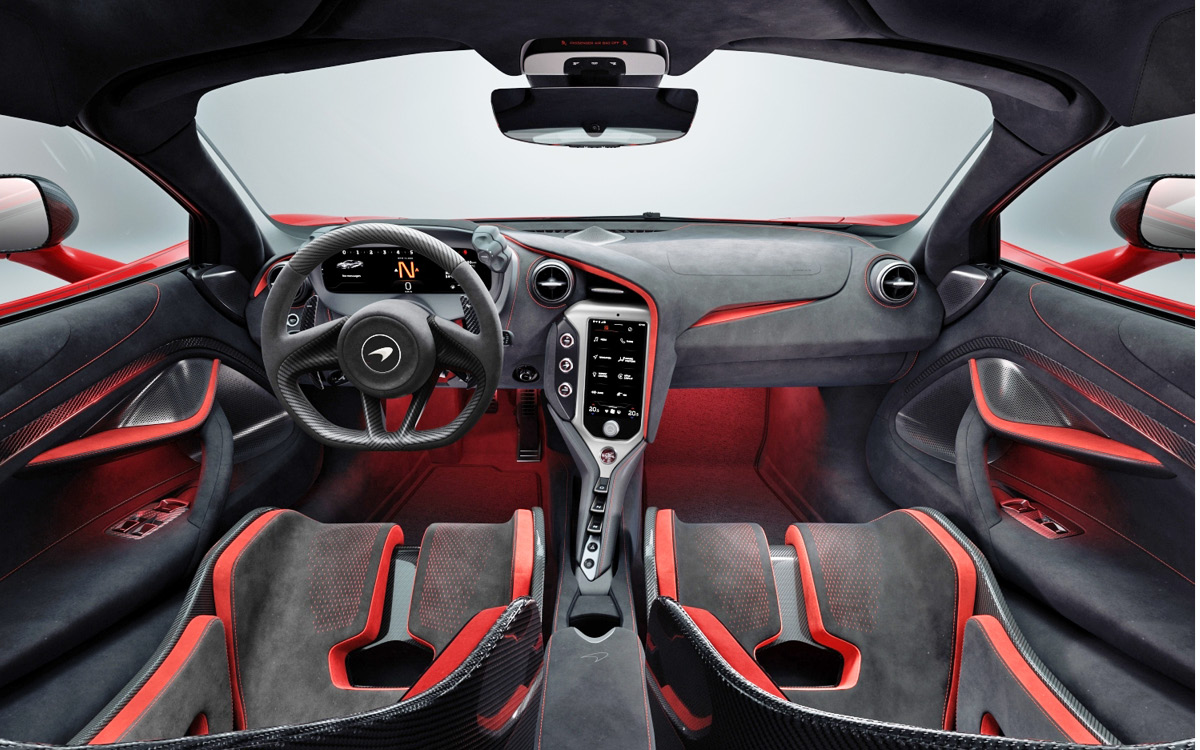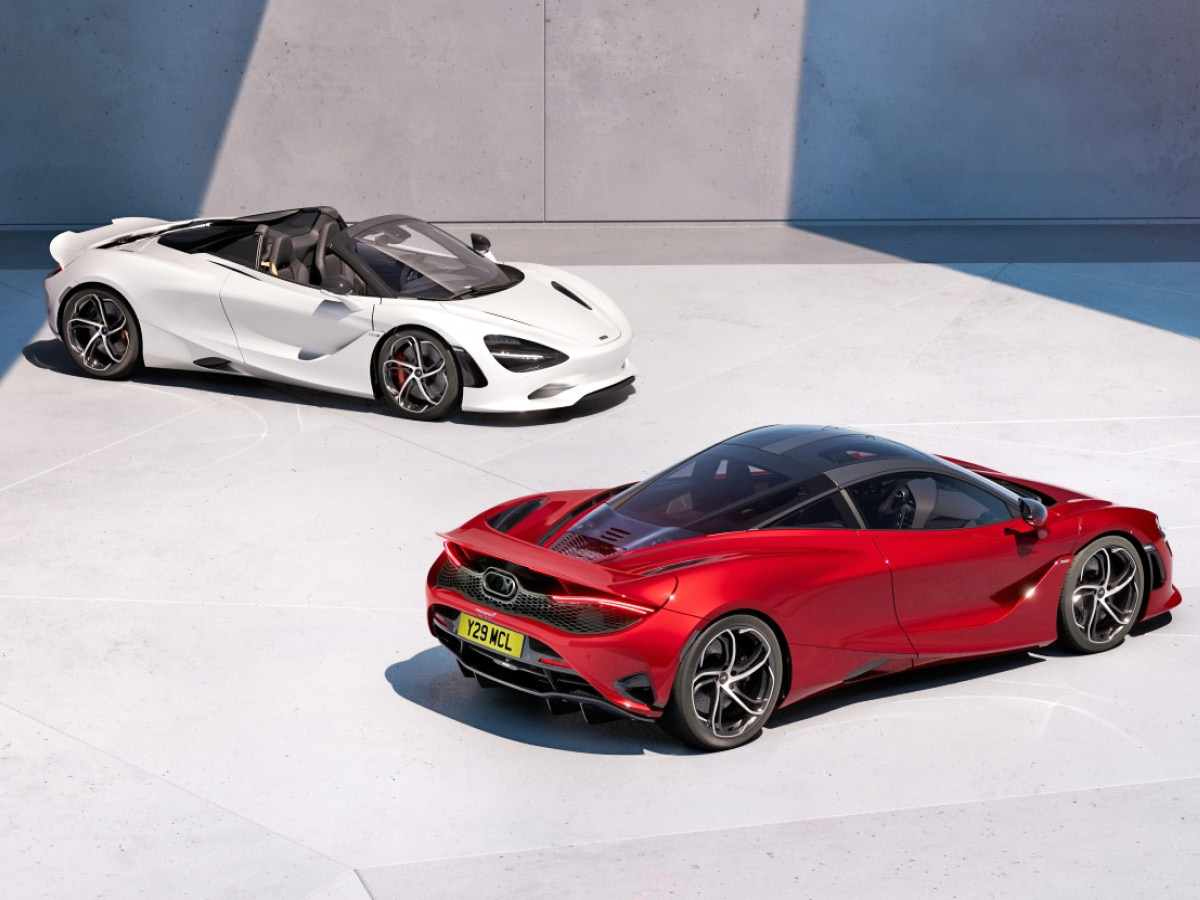The 720S Successor Isn’t Just About the Numbers
We hereby nominate McLaren for an honesty-in-marketing award. The car on your screen is the new 750S, which looks quite a lot like the 720S it replaces. That’s because it is essentially a much-revised 720S – lighter, more powerful, and even more agile on the track. Another carmaker might try to pass off such a model upgrade as “all new,” so, in our book, McLaren earns kudos for playing it straight.
While the 750S might not be “all new,” and the changes to the car might not seem monumental, they are the kind that an experienced 720S driver who really knows the car’s track behavior would likely feel after one lap.
McLaren touts the 750S as the lightest “series production car” it has ever offered, and the 30-hp boost also makes it the most powerful. Note however, that McLaren’s 765LT, Senna, Elva, and Speedtail models come under the automaker’s “Ultimate” series, not “series production,” and are excluded from that claim.
Is the 750S worth trading in a 720S? Let’s have a look.
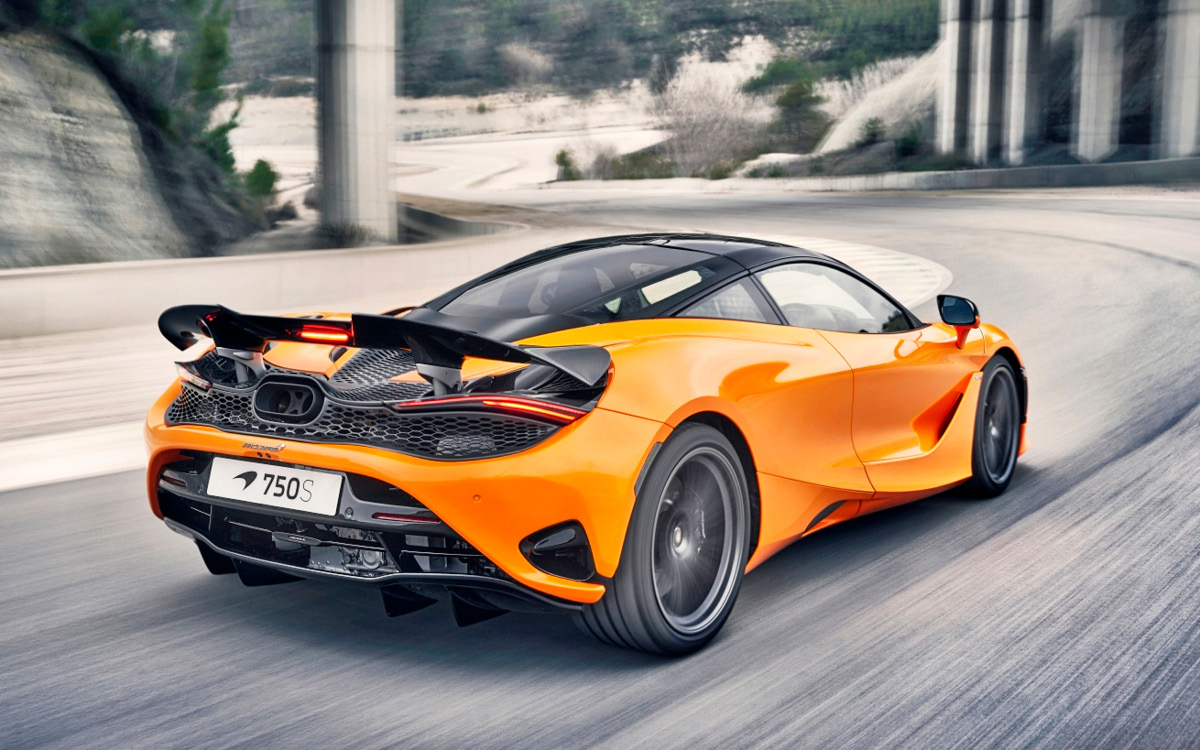
By the Numbers
With any new McLaren, a description must start with the engine, because a badge change – such as going from 720S to 750S – indicates a change in engine output. Remember, though, that McLaren expresses engine output as PS, a metric horsepower measurement. That explains why the 720S has 710 horsepower, and why the 750S jumps to 740 horsepower at 7,500 rpm. A 22 lb-ft increase in peak torque over the 720S brings that figure to 590 lb-ft at 5,500 rpm.
The output increase for the 4.0-liter twin-turbo V8 comes via higher turbo boost pressure and using the lightweight pistons from the 765LT model. Amplifying the power boost is a 15-percent lower (higher numerically) axle ratio to quicken acceleration. As before, a seven-speed dual-clutch automatic transmission is used.
McLaren claims a total 66-pound weight reduction compared to the 720S. That may seem minor in a car with 740 horsepower, but it’s where McLaren reduced weight that makes the change significant.
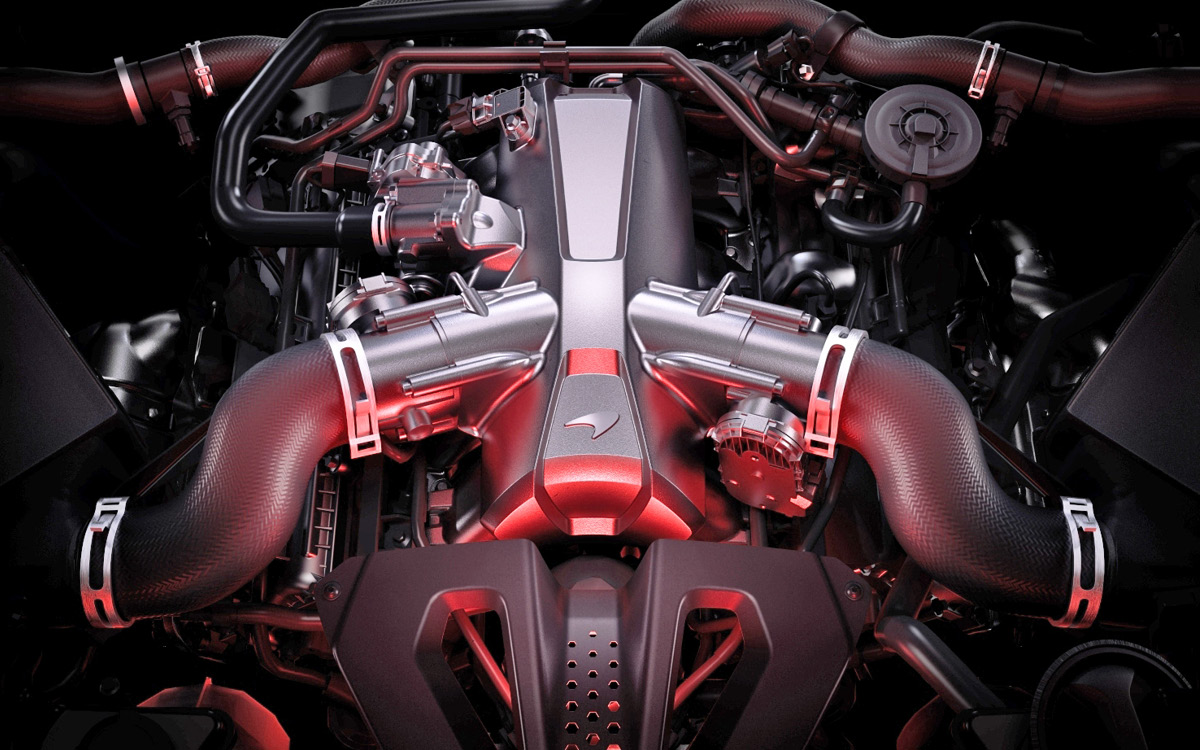
Lightweight Champ
When a car has been as weight-optimized as a McLaren, there’s barely any fat left to trim. There’s no back seat to delete, and pretty much everything that isn’t glass is made from carbon fiber or aluminum. Some of the changes to achieve that loss would be unremarkable in anything but such a highly optimized machine.
The biggest weight drops come from the carbon-fiber-shell racing seats (38.6 lbs lighter) and new 10-spoke ultra-lightweight forged wheels that shave 30.4 lbs compared to the 720S. Significantly, the lighter wheels (19-inch diameter in front, 20-inch at the rear) reduce unsprung weight, a critical boon to enhancing agility.
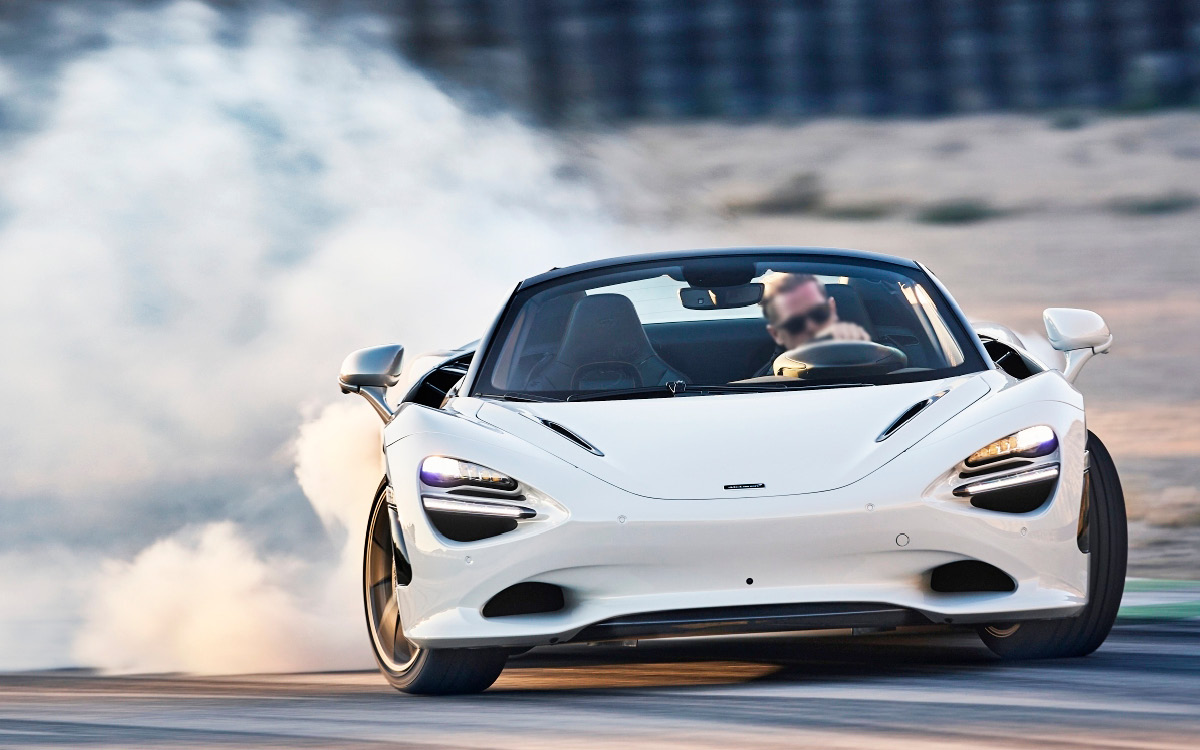
Counting Calories
Even the windshield glass went on a diet, dropping 3.5 lbs. If you’ve been counting, that adds up to a 75+ pound reduction, but McLaren must have added weight somewhere to reach the 66-pound calculation. In any case, McLaren says the 750S weighs 3,062 pounds with the gas tank filled to 90-percent capacity and all other fluids filled. (That’s about 104 pounds of fuel.)
McLaren took 4.5 pounds out of the suspension while tweaking the tuning. Front coil springs are three percent softer than in the 720S, while the rear springs are four percent firmer. The front track was widened by a quarter inch, and revisions to the car’s Proactive Chassis Control suspension, called PCC III, bolster the car’s mission.
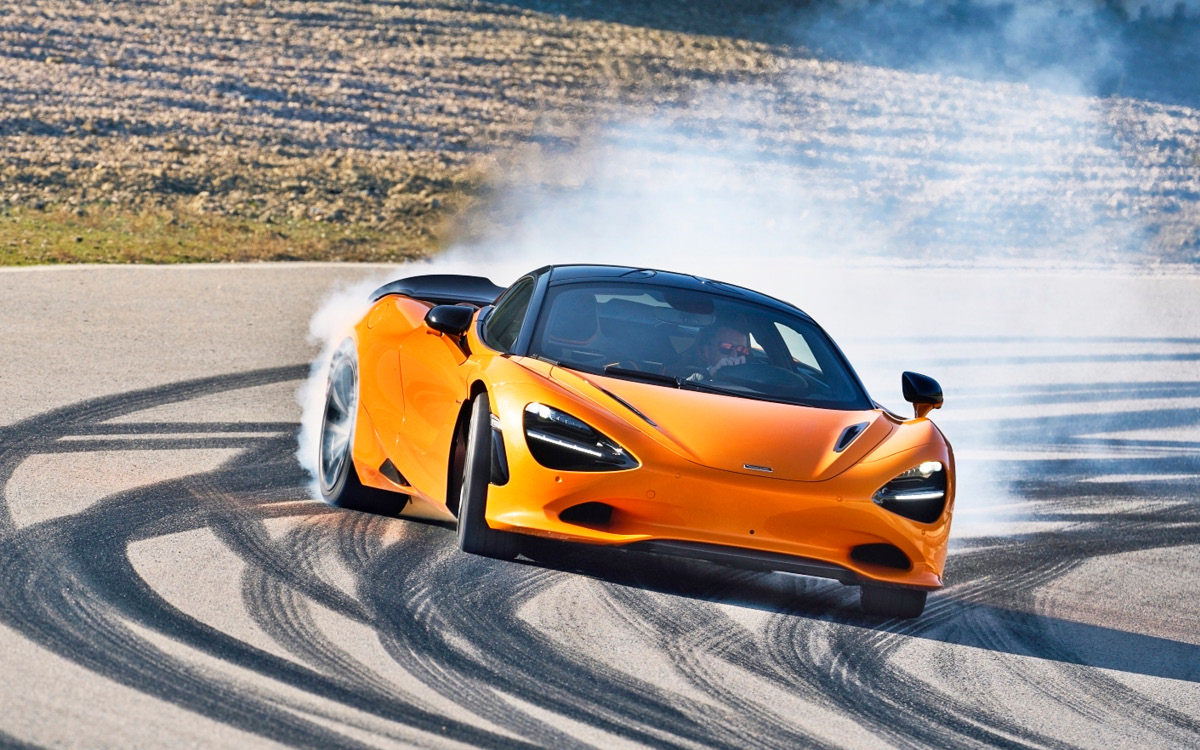
Mighty Quick and Fast
The McLaren 750S Spider adds 108 pounds to the coupe’s weight, and, adding up to just 3,170 pounds. Its retractable carbon-fiber hardtop is quick, lowering or raising in just 11 seconds, and at vehicle speeds up to 30 mph.
McLaren says the 750S can do 0-60 mph in 2.7 seconds, 0-200 km/h (124 mph) in 7.2 seconds, and 0-300 km/h (186 mph) in 19.8 seconds. Some published tests of the 720S had bettered those numbers slightly, so the 750S might be a tad quicker than McLaren says.
McLaren’s performance claims for the Spider are identical to those of the coupe, unless you consider it a liability to take four tenths of a second longer to go from 0-186 mph. The 206-mph top speed is the same for both models. The figures compare well with the Ferrari 296GTB, a gas-electric hybrid with more power but also more weight.
Both 750S models come standard with carbon-ceramic brakes, and there’s an option to get the even more track-capable carbon ceramic brake package from the Senna. In either case, McLaren also says it improved the power brake booster for better response and feel, not that anyone was complaining about the 720S brakes. For track work, Pirelli PZero Corsa or Trofeo R tires can be optioned.
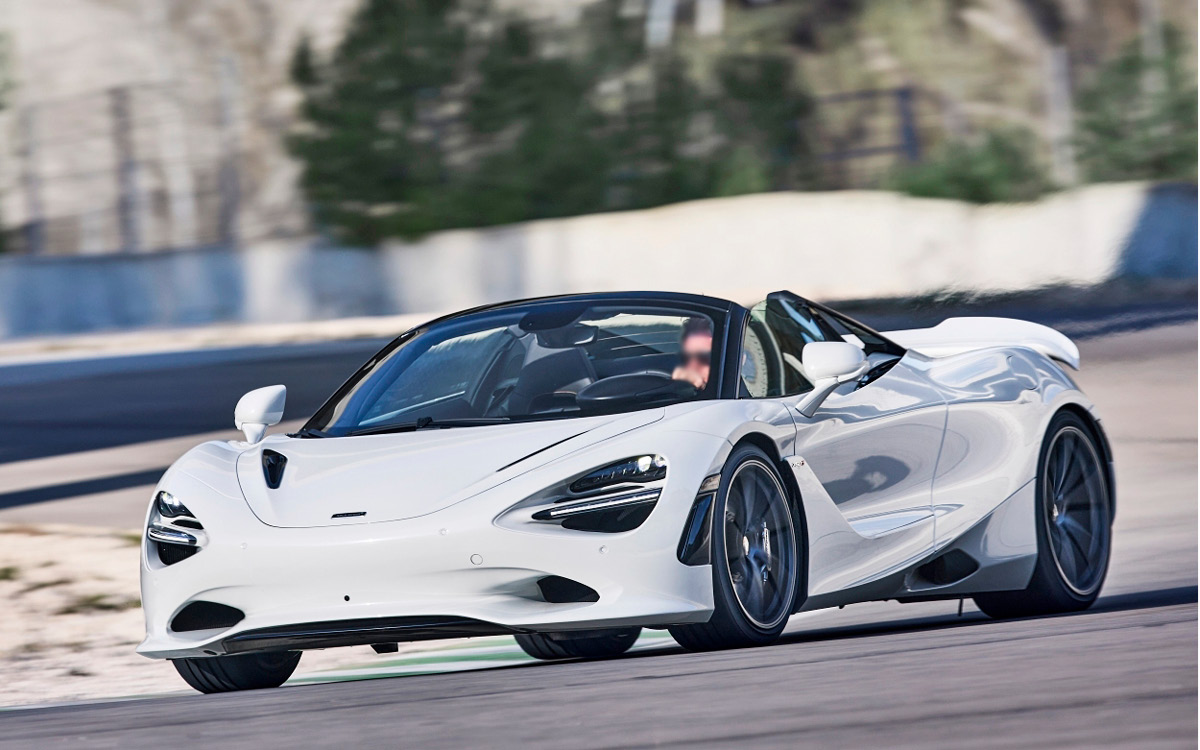
Winging It
The overall body design remains quite close to the 720S, but with some revisions to the aero package. The actively deploying rear wing is 20 percent larger for added downforce, and it flips up under braking to help with deceleration. The bigger wing and a new front splitter are said to increase downforce by five percent at track speeds.
If you have a 720S, you will certainly notice cockpit differences in the 750S, starting with the driver-configurable digital instrument panel from the McLaren Artura. The driver will now select handling and powertrain modes using switches on the sides of this binnacle. The 750S gets a new eight-inch touchscreen with improved graphics and better resolution for the rear-view and surround-view cameras.
As before, there are plenty of options to personalize a McLaren 750S, including an upgraded Bowers & Wilkins audio system. McLaren has announced a $324,000 MSRP for the 750S coupe and $345,000 for the 750S Spider. They’d probably be happy to take your 720S in trade
